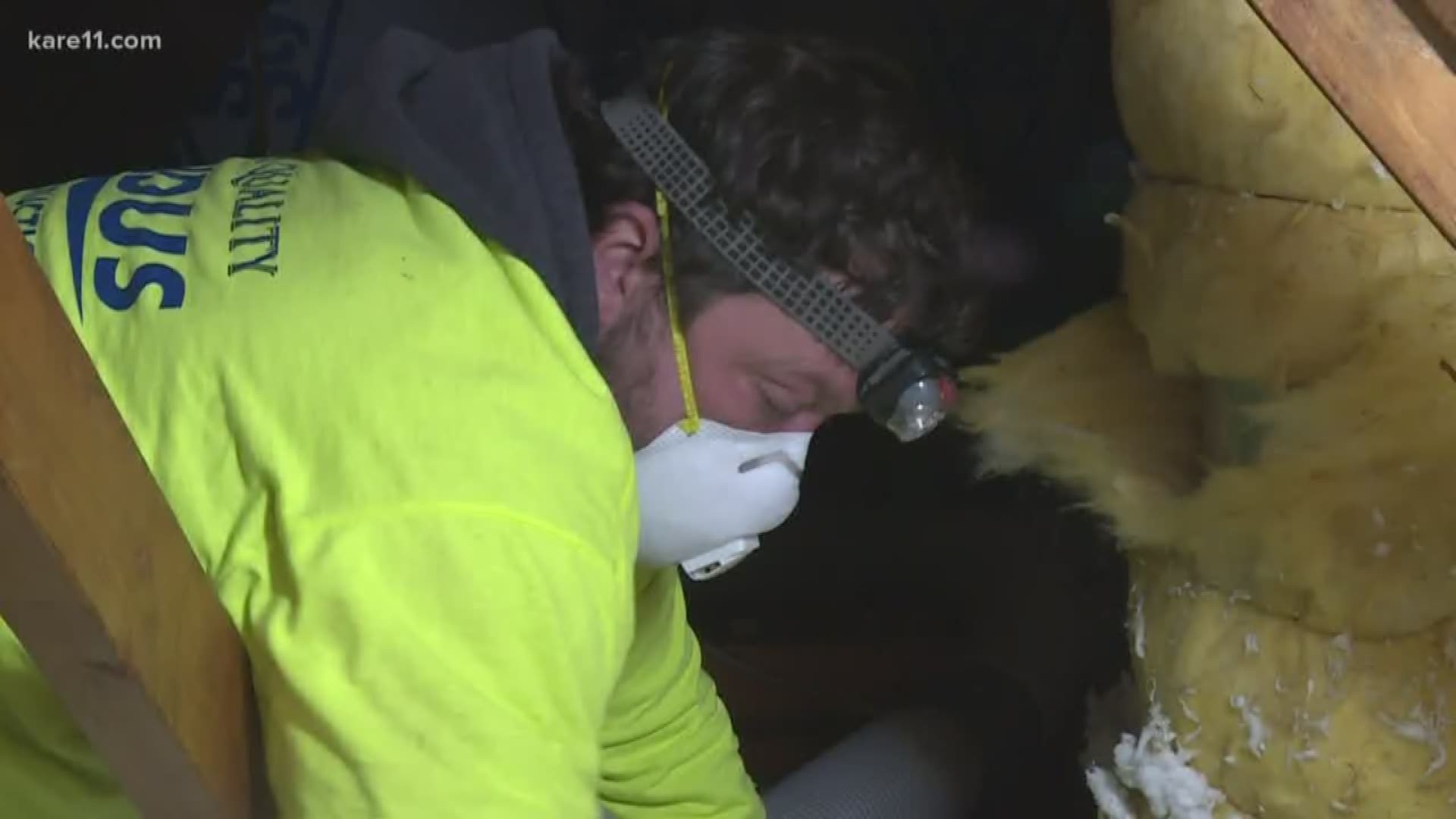ST PAUL, Minn. — The end of an extended Arctic blast featuring sub-zero temperatures for days on end should be something to celebrate, right?
Not if you're a roof in Minnesota.
A warming trend should push temps up above freezing this weekend during the daytime hours, while at night they drop back down into the single digits or teens. The ensuing freeze-thaw cycle is a classic recipe for ice dams, a winter phenomena that can cause significant damage to both the exterior and interior of your home.
The Minnesota Department of Commerce says contrary to the beliefs of some, ice dams are not caused by roofing, ventilation or gutter problems. The real culprit is inadequate air sealing inside the home - gaps around plumbing vents, electrical wires, chimneys, etc. - that allows warm, moist air to escape into the attic. Once there, it melts the underside of the snow layer on the roof, causing water to run down shingles until it reaches a cold spot, where it freezes.
Over time, that ice can build up into a dam that stops water from running down the roof slope, causing it to pool and eventually seep into the home. The resulting damage to insulation, ceiling drywall and other areas can cost thousands of dollars in repair.
Once an ice dam builds up to the point it is causing interior damage, the commerce department says the best option is to hire a professional company that will remove it using steam. Doing it yourself most often involves getting up on a slippery roof, unadvisable at best and downright dangerous at worst.
Stopping ice dams
Because the primary cause of ice dams is warm air leaking from the attic, commerce department experts say the best way to prevent ice dams from forming is to seal leaks with caulking or expanding spray foam.
A home energy audit, especially one that uses an infrared camera, can locate where warm air is escaping into your attic. An audit can be performed by your local utility provider, a non-profit energy group or local heating and air company.
You can also add a layer attic insulation installed to a minimum of R-50.
What you should NOT do
- Install heating cables. They will shorten the life of your roof and add to your energy costs.
- Remove ice with chippers, chemicals or heat. These can damage shingles, gutters and other building components.
- Add roof vents, including powered vents. They will not eliminate ice dams and often make the problem worse.
For more on the cause of ice dams and potential solutions, check out a dedicated page on the Minnesota Department of Commerce website.

